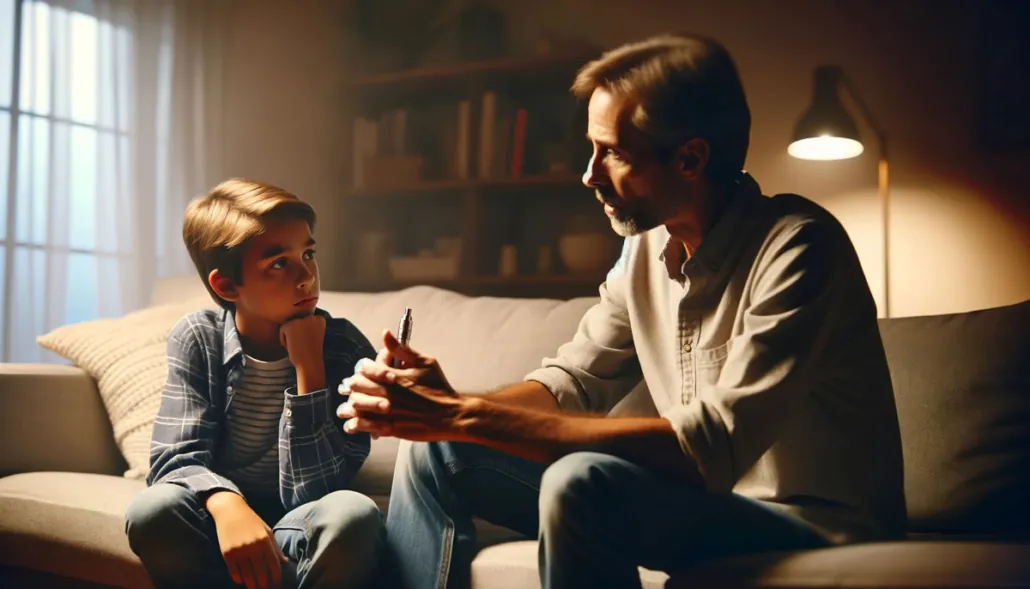Talking to Your Child About Vaping: A Parent’s Guide
As a parent, it’s essential to have open and honest conversations with your children about the dangers of vaping. With the increasing popularity of e-cigarettes among young people in the United States, it’s more important than ever to educate your child about the potential risks associated with these devices. According to a 2023 survey conducted by the U.S. Food and Drug Administration, more than 2.1 million middle and high school students reported currently using e-cigarettes. This alarming statistic highlights the need for parents to take a proactive approach in addressing this issue with their children.
Understanding the Risks of Vaping
E-cigarettes often contain higher levels of nicotine than regular cigarettes, making them highly addictive and harmful to health. The nicotine in e-cigarettes can negatively impact brain development in children and adolescents, leading to long-term consequences such as difficulties with attention, learning, and impulse control. Additionally, many e-cigarettes come in appealing fruit and candy flavors, which can be particularly enticing to teens. These flavors not only mask the harshness of nicotine but also contribute to the misconception that vaping is a safe alternative to smoking.
Dr. Deepa Camenga, a pediatrician and addiction medicine specialist with the Yale School of Medicine, emphasizes the importance of being the first person to have a conversation with your child about vaping, setting clear expectations, and helping them understand the risks. By taking the lead in this conversation, you can provide your child with accurate information and help them make informed decisions about their health.

When to Start the Conversation
It’s never too early to start talking to your children about vaping. Dr. Camenga recommends beginning these conversations before children reach their teenage years, as young kids are often exposed to vaping through media, observing it in public, or seeing their friends do it. Use this exposure as an opportunity to open up a dialogue in an age-appropriate manner.
Conversation Prompts for Different Age Groups
- Elementary school-aged children: Ask if they’ve heard about e-cigarettes or vaping in health class and what they learned about them. Explain that e-cigarettes contain dangerous chemicals that can harm their brain and body.
- Middle schoolers: Share that you read an article about some middle schoolers using vapes and ask if they’ve seen anyone vape at school and what they think about it.
- Teens: As they get older, share more details about the health impacts of vaping, such as its links to wheezing symptoms, lung injuries, and an increased risk for cancer. Discuss the latest research findings, such as the discovery of toxic metals like lead and chromium in e-cigarette aerosols.
Setting Expectations and Helping Your Child Avoid Vaping
Make your expectations clear to your child that they shouldn’t vape, and help them figure out strategies to avoid vaping in social situations. This could include making excuses to leave a situation where other kids are vaping, coming up with ways to turn down someone who offers them a vape, or changing the topic of conversation.
Encourage your child to engage in healthy activities and hobbies that promote a positive lifestyle. Involvement in sports, arts, or community service can help them build self-esteem, develop strong social connections, and reduce the likelihood of engaging in risky behaviors like vaping.
What to Do If You Discover Your Child Is Vaping
If you find out your child is vaping, it’s essential to stay calm and avoid confronting them in an aggressive manner. The calmer you are, the more likely your child will be open to talking and receiving suggestions. Show your support by asking how you can help and expressing your concern.
It’s also important to understand what may be driving the behavior. Nora Volkow, director of the National Institute on Drug Abuse, strongly recommends that teens who are vaping get screened for any underlying condition, such as struggling in school or feeling depressed or anxious, that could be contributing to their desire to use. Addressing these underlying issues can be crucial in helping your child quit vaping and maintain long-term abstinence.

Ecigator Sticky Open Pod Kit
The Sticky Open Pod Kit is a contemporary vaping device that combines functionality with fashion. This kit is designed with a box-style form factor, offering a compact and stylish appearance that’s ideal for vaping enthusiasts on the move.
At the heart of this kit is a Refillable Open Pod System, with a capacity of 2ml, perfect for accommodating a variety of e-liquids. The pod is equipped with a high-quality Mesh Coil that not only ensures a rich and flavorful vaping experience but also boasts durability for up to 8 Refills.
Supporting Your Child in Quitting Vaping
If your child expresses a desire to quit vaping, affirm their decision and offer your support. Help them understand that quitting can be challenging, and it may take multiple attempts, just like it does for adult cigarette smokers.
While medications typically given to adults to help them quit smoking haven’t been shown to work as effectively in teens, a therapist or other healthcare provider can help teenagers understand their addiction and identify factors that lead them to continue vaping when they no longer want to do it. Cognitive-behavioral therapy (CBT) has been found to be an effective approach in helping adolescents quit vaping, as it teaches them coping strategies to manage cravings and triggers.
Additionally, there are several resources available to help teens quit vaping, such as:
- Truth Initiative’s This is Quitting program: A free text message program that provides tips, inspiration, and support for quitting vaping.
- National Cancer Institute’s SmokefreeTeen website: Offers information and tools to help teens quit vaping, including a quit plan builder and a text message program.
- American Lung Association’s Not On Tobacco (N-O-T) program: A voluntary quit program designed specifically for teens that addresses the physical, mental, and social aspects of nicotine addiction.
By having open, honest, and age-appropriate conversations with your child about vaping, setting clear expectations, and offering support, you can help protect them from the dangers of e-cigarettes and guide them towards making healthier choices. Remember, quitting vaping is a process, and your child may need ongoing support and encouragement. With patience, understanding, and the right resources, you can help your child achieve a vape-free life.
- Minneapolis Sets $25 Minimum Price for E-Cigarettes - July 11, 2025
- Alabama Schools to Implement New Anti-Vaping Policies - July 11, 2025
- Is Vaping and Driving Illegal in Rhode Island? (2025 Guide) - July 10, 2025









